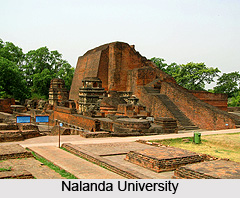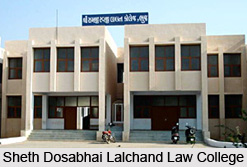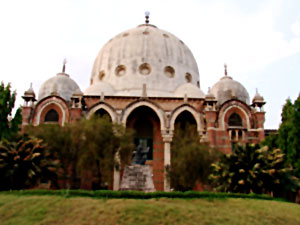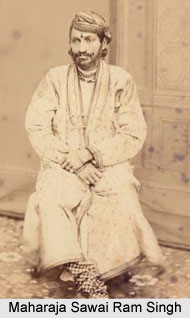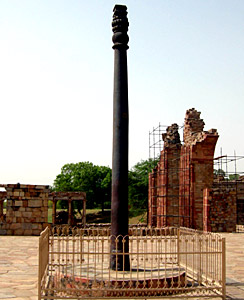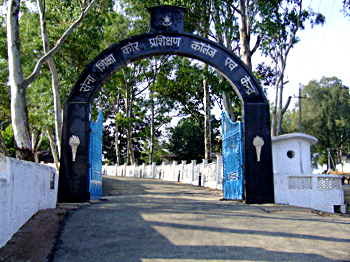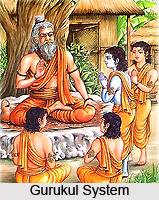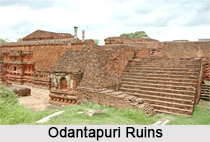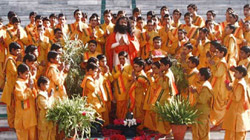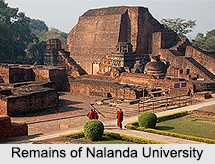Women in Ancient India
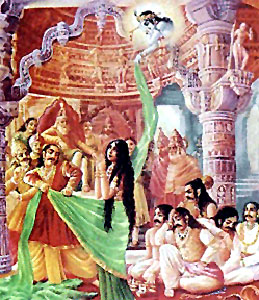 Women in India have been experiencing different status since the inception of the civilisation. Though women form half of the population, yet the masculine principles made the women suffer a lot. They were denied equal opportunities and importance as men. India was no different from the rest of the world. Indian women have been struggling for equal rights over the past millennium. Hence, the history of women in India has been very eventful. The uprising of various female reform movements all over the country resolved the condition of women India gradually. However, in India women were assigned to certain rights in the ancient days. Interestingly, Women Education in Ancient India augmented.
Women in India have been experiencing different status since the inception of the civilisation. Though women form half of the population, yet the masculine principles made the women suffer a lot. They were denied equal opportunities and importance as men. India was no different from the rest of the world. Indian women have been struggling for equal rights over the past millennium. Hence, the history of women in India has been very eventful. The uprising of various female reform movements all over the country resolved the condition of women India gradually. However, in India women were assigned to certain rights in the ancient days. Interestingly, Women Education in Ancient India augmented.
The position of women in ancient India was vital. They used to take important decisions and were also allowed to choose their own husbands through the ancient system of "Swayamvara". A woman in the ancient society in India was respected and was given due importance in the society. The Vedas finds importance of the women philosophers and intellectuals of the Vedic Period. In the Vedic period, Women Education in Ancient India was prevalent.
Indian Women during the ancient times was said to be superior to men. The women in ancient India were given significance and they held a prominent position in the Indian society during that time. Access to education was easy for the women in ancient times. Through the massive Women Education in Ancient India several women seers and thinkers originated in ancient times such as Gargi and Maitreyi. Women enjoyed the tremendous right to education and teaching. The women intellectuals in ancient India gathered eminence by participating in educational debates and discussions in the assemblies of erudite persons
Gargi was a prominent participant in the ancient society beside men such as Uddalaka Arni. In Vedic period, educational system was very developed and the main subject taught was the Veda. The Veda or the six Vedangas were taught including the performance of sacrifice, correct pronunciation, knowledge of prosody, etymology, grammar, and jyotisha or the science of calendar. Women Education in Ancient India produced women with significant authority. Ancient Indian texts describe the influence of the women in the society. Mahabharata by Veda Vyasa sketch the persuasion of Draupadi on the husbands to overthrow the Kauravas. Valmiki`s Ramayana also depict the influence of Sita that resulted in the wiping away of Ravana.
Women Education in Medieval India
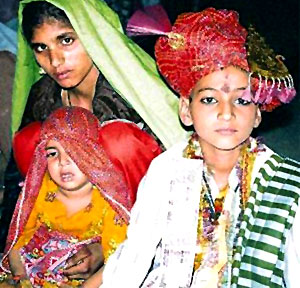 Education in Medieval India was influenced mostly by foreign invasions. Various traders and rulers came to India during the medieval period and brought their own culture and tradition as well as learning process. Indian society imbibed those knowledge and introduced it among the people of the country. However, these foreign conquests resulted in the decline in women`s status in the medieval period. The female literacy rate in India was lower than the male literacy rate. Women Education in Medieval India suffered a lot.
Education in Medieval India was influenced mostly by foreign invasions. Various traders and rulers came to India during the medieval period and brought their own culture and tradition as well as learning process. Indian society imbibed those knowledge and introduced it among the people of the country. However, these foreign conquests resulted in the decline in women`s status in the medieval period. The female literacy rate in India was lower than the male literacy rate. Women Education in Medieval India suffered a lot.
Women were described in ancient Indian texts as weaker sections of the society. They were considered as frail physically and both socially. Thus, though women were given equal rights in the Vedic period, their situation deteriorated with time. The medieval societies were subjected to inequalities and they were oppressed too. Historically, the medieval period is attributed as the `dark age` for women in India. In the medieval India, women were introduced to `Purdah`, (a veil) system. Moreover, several evils started in the society. Social evil practices such as Child Marriage, Sati, Jauhar were restriction on Women Education in Medieval India.
Nevertheless, the status of women in Southern India was far better than the North India. Women Education in Medieval India was seen in the south India. Several thinkers emerged at that time such as: Priyaketaladevi, queen of Chalukya Vikramaditya and Jakkiabbe. Furthermore, the evil practices of the societies existed only among the Hindu community. Other religions such as Hinduism and Buddhism gave freedom to women. They were given the freedom of education and were offered a more liberal approach. The plight of Indian women during the middle Ages was very intense.
The coming of the Muslims aggravated the troubles of the women in India in the medieval period. The women were forced to practice `zenana`. In addition to that Muslim women were prevents them from getting equal access to education. Women Education in Medieval India was restricted among the Muslim women due to religion. Muslim women were illiterate; however, certain sections of the women were better off and were given higher levels of education.
During the Muslim rule, Women Education in Medieval India was constrained because Muslim men were also subjected to low educational attainment in general. On the other hand many women excelled in arts, literature, music in the medieval period. Women also served as rulers in the medieval period. Razia Sultan was the only women monarch to rule the throne of Delhi in the middle ages. The Gond queen Durgavati ruled for fifteen years, before she lost the battle to Mughal emperor Akbar`s general Asaf Ali.
Women Education in Colonial India
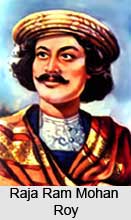 One scholar drives home the point that "The lives of Indian women began to change significantly in the late nineteenth century when the colonial government, critical of the treatment of both Hindu and Muslim women, found allies among Indian reformers. Keen to reform their own society, these men agreed that women should be educated and play some role in public life."
One scholar drives home the point that "The lives of Indian women began to change significantly in the late nineteenth century when the colonial government, critical of the treatment of both Hindu and Muslim women, found allies among Indian reformers. Keen to reform their own society, these men agreed that women should be educated and play some role in public life."
Indeed, reformist stalwarts like Raja Rammohun Roy formed a coalition power with the British to abolish the social abuse, Sati. Again, Pundit Ishwarchandra Vidyasagar consolidated the way for the remarriage of socially forsaken widows through the Widow Remarriage Act no XV of 1856.He empathetically lamented the deep distress of Indian womanhood, while campaibning for widow-remarraige: "The country, whose male population is unkind, unreligious and unaware of the distinction between the good and the evil and don`t care about justice and fairness and where abiding the rituals is the chief preoccupation of religion, should not give birth to girls!"
The air of reformation held high the urgency for casting the enlightenment of education on women. The sea or sagar of Vidya, i.e. Knowledge, the erudite and social-activist, Vidyasagar inundated the nation with the deluge of education. He opened 30 schools for girls in Bengal to promote the betterment of the feminine community. Similar to him was the Telegu feminism-enthusiast, Kandukuri Virasalingam Pantulu of Andhra Pradesh. In fact, the Bengal Renaissance of Consciousness, Intellectuality and Cultural pursuits, ushered in a phenomenal rebirth or Renaissance of the Consciousness of Women`s Well-being amidst the prevalent tyrannical society.
The British government eager to prove their liberal, ethical and pro-modernity attitude resorted to the "woman question". This is the fundamental feminist question concerned with the rights and progress of women. British denounced the existing insignificance of Indian womanhood, and tried to initiate some feminist welfare activities to show their socio-cultural advancement and Western nobility. They took help of the native indigenous modern minds like Raja Rammohan Roy, Ishwarchandra Vidyasagar, Keshubchandra Sen and other eminent Indians. What began as a more or less contest for moral supremacy among the oriental tradition and the Western civilization, was turned into a beneficial move by the benevolent Indian priests of humanism, like Rammohan Roy.
The ancient Indian system of learning involved the accretion of the knowledge of the sacred Vedas and Puranic Sastras . The biased caste-system made Vidya available for the Brahmin or the priestly class, the Kshatriya or the warrior class and the Vaishya or the businessman`s class. The Shudras or the non-Aryan class were the socially marginal section, barred from accessing education. Early Vedic society, allowed girls to acquire knowledge and grow into prominence. We can boast of women poets like Lopamudra and Gargi but in the later Vedic society, the orthodox Brahmins introduced blind superstitions, rituals, and rigid customs, which forbade Girls from learning. Only some women hailing from the upper class Vaisnavite (followers of the cult of lord Vishnu) families could study the precious Puranas. Islam wanted girls to be knowledgeable about the Quran and accounting tactics. However the austere confinement of girls within the four wall of the interiors of house-prison , minimized the possibilities.
We recognize a severe disappointment of the Western educational entrepreneurs with the oppressive social norms. In his Report on the Condition of Education in Bengal (1836), the annoyed William Adam informed with condescension: "A superstitious feeling is alleged to exist in the majority of Hindu families, principally cherished by the women and not discouraged by the men, that a girl taught to read and write will soon after marriage become a widow." Adam was disgusted with the disgraceful fear, that loomed large over the Hindu and Muslim social arena. The overriding tension was that "knowledge of letters" would teach female to oppose the meaningless coercion. The terrible situation made Hindu women absolutely dependent on fathers in childhood, then on husbands in marital life, and ultimately on the sons during the old age. All her life, a woman observed religious practices wishing for the long and safe life of the male members of her family, as per as the custom. So, it was easy to impose the demeaning superstition that a woman`s contact with learning was harmful. She would welcome the curse of her husband`s death, and thereby would turn her into hell.
Rassundari Devi , the author of the autobiographical, "Aamar Jiban" and one of the pioneers in indigenous women`s writings , poignantly describes her indomitable struggle for reaching the gateways of education:
"I was so immersed in the sea of housework that I was not conscious of what I was going through day and night. After some time the desire to learn how to read properly grew very strong in me. I was angry with myself for wanting to read books. Girls did not read. That was one of the bad aspects of the old system. The other aspects were not so bad. People used to despise women of learning... In fact, older women used to show a great deal of displeasure if they saw a piece of paper in the hands of a woman. But somehow I could not accept this." Rassundari did accomplish in her mission, although it was a slow but steady process.
It was obvious that women were so intellectually and emotionally blind, under the cover of false definition of femininity tied on their vision, that one woman was prejudiced against the efforts of the other to attain freedom. On the contrary, true womanhood is only understood and adhered to, when illuminated by education. It is education which makes a female competent enough to handle the issues of her life, to be self-sufficient, to become an able daughter who can have economic independence and support her family, to stand by her husband in difficult times, and to rear up her children with the right education. Certainly, the strength of today`s global woman lies in the truth that she is a multi-tasker, invested with such outstanding caliber.
Haimavati Sen (1866-1932), born a half-century later, than Rassundari Devi portrayed her childhood in Khulna District of East Bengal: "The outer quarters were my resort, that is where I spent all my time; during the office hours I stayed in the school room. The teacher was very fond of me. I greatly enjoyed listening to the lessons. But I had no right to education. Though I lived like a boy in every respect, in matters of education I remained a woman. It is a popular superstition in our country that women, if educated, have to suffer widowhood; hence that path was entirely closed for me. But I was inspired by an eager wish God had planted in my heart."
Indian society thus deliberately practiced conspicuous gender-equality. There sprouted a lot of hostility from the conservative lawmakers of society against the new innovations, like advent of education for women. And hence it was really tough for the colonial government as well as the interested reformers, to give a concrete shape to their dreams.
The Calcutta School Society was built in 1816 to improve the status of female education.
Radha Kanta Deb, the secretary of this society, was committed towards the cause and helped the coming up of the Calcutta Female Juvenile Society (founded in 1819 by Baptists). In 1821, the School Society asked Miss Mary Anne Cooke, who came down to Calcutta to manage the task. The Church Missionary Society appointed Miss Cooke for the purpose. The resultant was the establishment of thirty schools for "respectable" Hindu girls. The schools expanded their work under the finances funded by the Hindu aristocracy. However the endeavor, did not bear fruits, as the elite class intentionally distanced themselves from the institutions where the poor crowded tempted by gifts of clothing and other articles.
The Church Missionary Society tasted greater success in South India. The first boarding school for girls came up in Tirunelveli in 1821. By 1840 the Scottish Church Society constructed six schools with roll strength of 200 Hindu girls. When it was mid-century, the missionaries in Madras had included under its banner, 8,000 girls.
J. E. Drinkwater Bethune was a legal member of the Governor-General`s Council and President of the Council of Education in British India. Calcutta witnessed the contribution of J.E.Drinkwater in the creation of the Hindu Bahka Vidyalaya in 1849. The curriculum was secular and the medium of instruction was Bengali. Pandit Vidyasagar was entrusted with the responsibility of the school secretary. Bethune motivated various renowned families to take part in this venture. By 1850 there were eighty students, going to the school. In 1863 the school was populated with ninety-three girls, ranging from five to seven years in age. Portions of them were related to the "lowest class", a data that exhibited the developing circulation of education.
Initially the Indian social-correctors and the British supervisors went into a dispute over the course of operations. The Indian intelligentsia did not approve of the first girls` school, founded by the Missionaries. It was unfortunate that until the grants were afforded by the government and the Wood`s Despatch, 1854, in the second half of the nineteenth century. The Wood`s Despatch, launched in July 1854, drew the government `to the importance of placing the means of acquiring useful and practical knowledge within reach of the great mass of the people`. Wood`s Despatch, particularly emphasized on the need for women`s education: "The importance of female education in India cannot be over-rated; and we have observed with pleasure the evidence which is now afforded of an increased desire on the part of many of the natives to give a good education to their daughters. By this means a far greater proportional impulse is imparted to the educational and moral tone of the people than by the education of men.."
To conclude, women`s education started spreading its wings. The outcome was the evolution of the nineteenth century generation of the "new woman". The latter half of the 19th century started seeing the rise of Indian womanhood to freedom and assertion. Women used to attend schools and colleges, though in limited numbers, receive education and assume the respectable professional roles of teachers and doctors. Saraladevi Chaudhurani, Kamini Roy, Lady Abala Bose, Pandita Ramabai were the celebrated examples of the "new woman" of the times. The new women voiced their feelings on contemporary affairs, penned their arguments in instruments of expression, such as the journals or magazines, and even participated in mainstream nationalist politics, to represent the Indian womanhood. Women established their presence in almost all the areas, which were previously the monopoly of men.
Women Education in Modern India
Modern age was the time of reformation in India as well as in the whole world. After the Mughals invaded India, the British entered the country with an aim to spread their statute in the whole subcontinent. The British brought with them many new ideas and enlightened the Indians. The status of women in modern India is subjected to inconsistency. The Indian women in modern period outshine in certain areas whereas on the other hand she has to suffer the violence of the men dominated society. The condition of Indian women developed in the colonial period. After independence the scope for women increased and Women Education in Modern India widened.
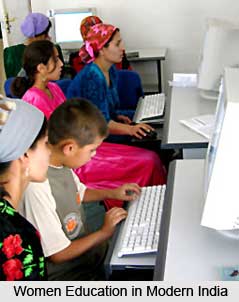 The period and after 1948 in India, highest priority was given to women education. Women Education in Modern India became the major concern for both the government and civil society as educated women can play a vital role in the development of the country. Thus there was a great upsurge in awareness regarding women`s rights among all sections of society. Various developmental programmes and policies were introduced in order to improve the social status of women. Education is creditable as it is beneficial for women as this reduces female infant mortality and child mortality rates.
The period and after 1948 in India, highest priority was given to women education. Women Education in Modern India became the major concern for both the government and civil society as educated women can play a vital role in the development of the country. Thus there was a great upsurge in awareness regarding women`s rights among all sections of society. Various developmental programmes and policies were introduced in order to improve the social status of women. Education is creditable as it is beneficial for women as this reduces female infant mortality and child mortality rates.
In India the educational system was modified and three-tier instruction process was developed. All citizens of India are offered the right to education and Women Education in Modern India was opened to a new vista. The structure of Indian education system came into being. Two important structures came into being: formal and Non-Formal Education programme. Various other educational programmes such as online education and distance education were also launched. The main aim of all the educational programmes is to make every girl child of the society literate.
At present, Women Education in Modern India has achieved a new height. Currently, entrance of women in engineering, medical and other professional colleges is overwhelmingly elevated. Most of the professional colleges in the country keep thirty percent of the seats reserved for females. In urban India, girls are opened to a far wider scope then the rural girls.
In cultural reality, the women enjoyed a privileged position in the Vedic period. The women had special customs, rituals and spirituality, with which men were not allowed to interfere. In medieval period though women had to suffer because of various foreign interferences, yet in modern times the condition of women developed gradually. Moreover, Women Education in Modern India increased the intellectuality of the Indian women. Indian history produces famous women saints, healers and priests. For instance Andal, a 6th century A.D. sage and Jnanananda Ma of the 20th century have contributed to the society.
